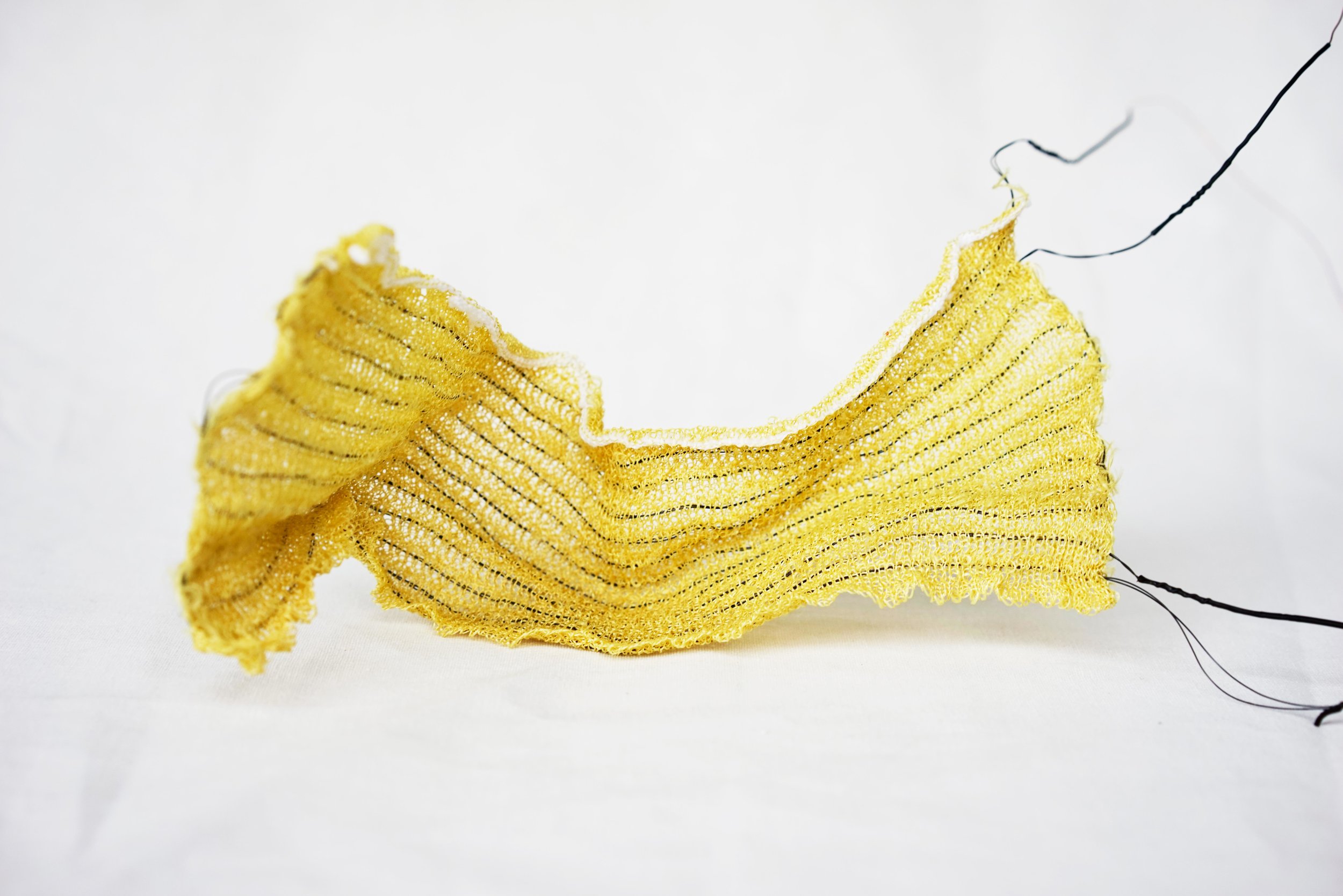HAcking MAnufacturing-research on the factory floor
In the summer of 2017, I spent a month in a knitting factory in Shenzhen China with another seven MIT students. We were given the rare chance to work in a real operating show upper factory and play with the machines a few of the thousand machines they had operating 18 hours a day.
Industrial knitting is a process which is mostly used to make garments and shoe uppers. It is a very intriguing process: the possible combinations of materials and textures are almost endless, and since it is such an ancient craft, its manufacturing technologies have been brought to perfection. An industrial knitting machine can be looked at is if it was a multi-nozzle, multi-material 3d printer, which can also print at a manufacturing speed!
But one thing about knitting machines is slightly disappointing: they are super fragile and the final outcome is mostly a soft piece of fabric.
I found it also very surprising that most material choices that manufacturers made are pretty standard: nylon, spandex, polyester and sometimes silver-coated conductive yarn. The reason is that the machine is just too delicate to deal with other materials.
I was intrigued by the possibilities of incorporating new materials into the knitting process. Materials that would provide the knitted fabric superior properties and unique capabilities.
A programmable Kevlar-Nitinol knit. The fabric can be programmed to a specific shape by applying voltage across the Nitinol wire (resistive heating) and forcing it to a specific shape. after the fabric cools down, it will always fold to this programmed shape when heated beyond its pahse transition temperature
I tried knitting with a variety of materials such as fiberglass, Kevlar, and carbon fiber, with the thought of making a digitally controlled reinforcement material which will later be put in a resin matrix, but the inferior properties of the knitted structures with respect to woven structures seemed prohibitive. in addition, any attempt to try a new yarn resulted in dozens of broken needles. To circumvent that and to work with stiffer and thicker materials, I hacked the machine, creating an alternative yarn routing system and counterbalancing weight.
Inlays
After a quick discussion with the factory's crew, we decided to focus on the inlay technique in order to incorporate the new materials that I was trying to use.
In an inlay, additional material is incorporated into the fabric horizontally as the fabric is being knitted. Thus, much thicker and stiffer materials can be used. I was able to create Kevlar-Nitinol, Optical fiber-Nylon and copper-polyester composites using this system.
a quick and simple code that I wrote in processing helped me generate bitmaps that correspond to the inlaid knitted structures of varying density, and was later converted to machine code, using the visual programming language of the machine.
The Kevlar-Nitinol fabric was especially interesting: because of the inlaid structure, the Nitinol wires did not touch each other, thus allowing for equal heating (without causing an electrical short) along the wire. This, in combination with the Kevlar's high decomposition temperature, resulted in a fabric that can be shaped and then programmed to have a memory of that specific shape by applying voltage to the nitinol wire while forcing the nitinol to remain in its shape. After the training period, the fabric will return to this shape any time the temperature exceeds the phase transition temperature of the alloy.
Multiple inlays can be used and programmed separately to create an electronically controlled, knitted soft robot, or a single inlay can potentially be used to create garments that fold themselves in the washer, or other cool temperature-responsive shape changing fabrics.





